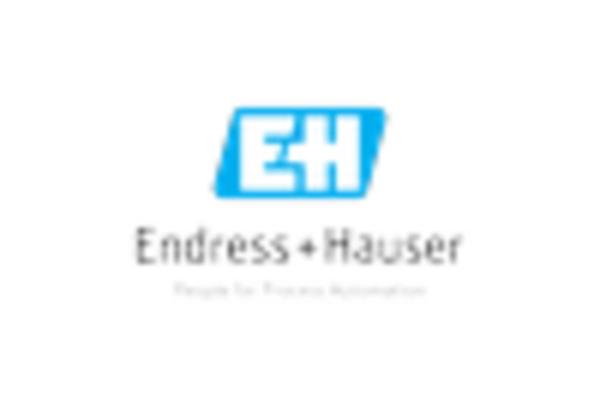Increasing Regulatory Compliance
The Water Quality Sensor Market is significantly influenced by the increasing regulatory compliance requirements imposed by governments and environmental agencies. Stricter regulations regarding water quality standards are being implemented to safeguard public health and the environment. For instance, regulations concerning the permissible levels of contaminants in drinking water are becoming more stringent, necessitating the use of advanced water quality sensors for monitoring and reporting. This trend is expected to drive market growth, as industries and municipalities seek to comply with these regulations. The market is anticipated to witness a notable increase in demand for sensors that can provide real-time data and ensure compliance with regulatory standards. As a result, the water quality sensor market is projected to expand, with an estimated market value reaching USD 5 billion by 2027.
Growing Investment in Water Infrastructure
The Water Quality Sensor Market is poised for growth due to the increasing investment in water infrastructure projects worldwide. Governments and private entities are recognizing the need to upgrade aging water systems and ensure the delivery of safe drinking water. This investment is often accompanied by the implementation of advanced monitoring technologies, including water quality sensors, to ensure compliance with safety standards. The market is likely to benefit from these initiatives, as the demand for reliable and accurate water quality monitoring solutions continues to rise. With an estimated investment of over USD 1 trillion in water infrastructure expected in the coming years, the water quality sensor market is projected to experience substantial growth, driven by the need for enhanced monitoring capabilities in newly developed and existing water systems.
Rising Demand for Water Quality Monitoring
The Water Quality Sensor Market is witnessing a rising demand for water quality monitoring solutions across various sectors, including agriculture, aquaculture, and municipal water supply. The need for continuous monitoring of water quality is becoming increasingly critical due to the growing concerns over water pollution and its impact on health and ecosystems. In agriculture, for instance, farmers are increasingly adopting water quality sensors to optimize irrigation practices and ensure the health of crops. This trend is likely to contribute to the market's growth, as the demand for reliable and efficient monitoring solutions continues to rise. Furthermore, the increasing investment in smart water management systems is expected to bolster the adoption of water quality sensors, with the market projected to grow at a CAGR of 8% over the next few years.
Expansion of Smart Water Management Systems
The Water Quality Sensor Market is benefiting from the expansion of smart water management systems, which integrate advanced technologies for efficient water resource management. These systems utilize water quality sensors to collect real-time data, enabling utilities and organizations to make informed decisions regarding water treatment and distribution. The integration of Internet of Things (IoT) technology into water management systems is facilitating the development of smart sensors that can communicate data seamlessly. This trend is likely to enhance the operational efficiency of water utilities and improve the overall quality of water supplied to consumers. As cities and municipalities invest in modernizing their water infrastructure, the demand for water quality sensors is expected to rise, contributing to a projected market growth of approximately 6% annually over the next five years.
Technological Advancements in Sensor Technology
The Water Quality Sensor Market is experiencing a surge in technological advancements, particularly in sensor technology. Innovations such as miniaturization, enhanced sensitivity, and real-time data transmission are becoming increasingly prevalent. These advancements enable more accurate and efficient monitoring of water quality parameters, including pH, turbidity, and dissolved oxygen levels. As a result, the market is projected to grow at a compound annual growth rate (CAGR) of approximately 7.5% over the next five years. This growth is driven by the demand for high-performance sensors that can operate in diverse environments, from industrial applications to municipal water systems. The integration of advanced materials and smart technologies into sensor design is likely to further enhance the capabilities of water quality sensors, making them indispensable tools in environmental monitoring and management.

















Leave a Comment